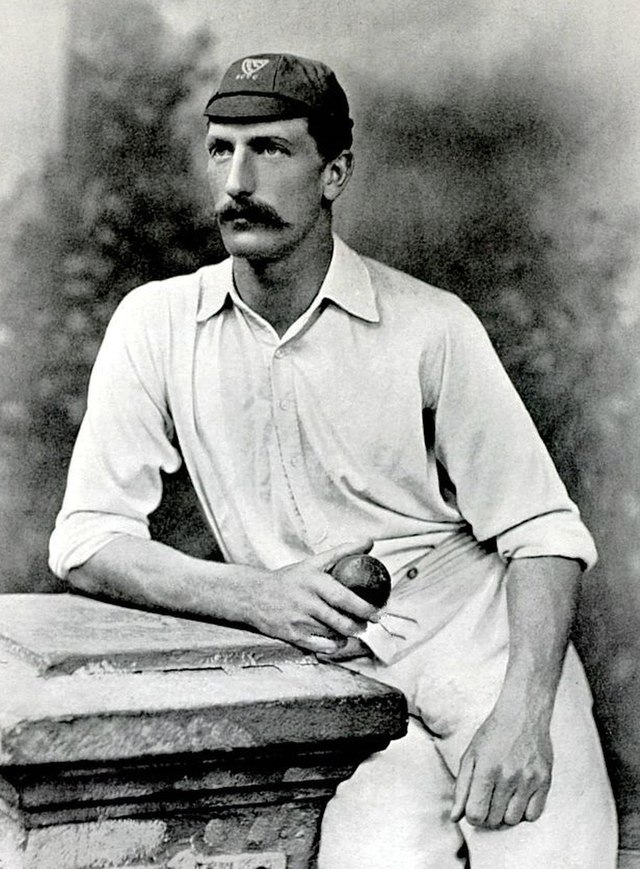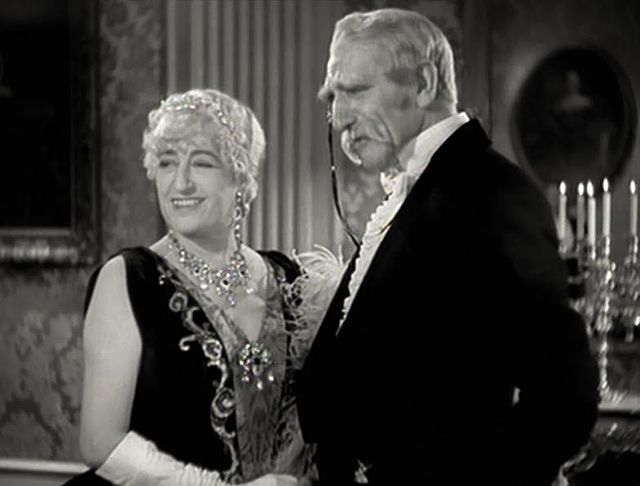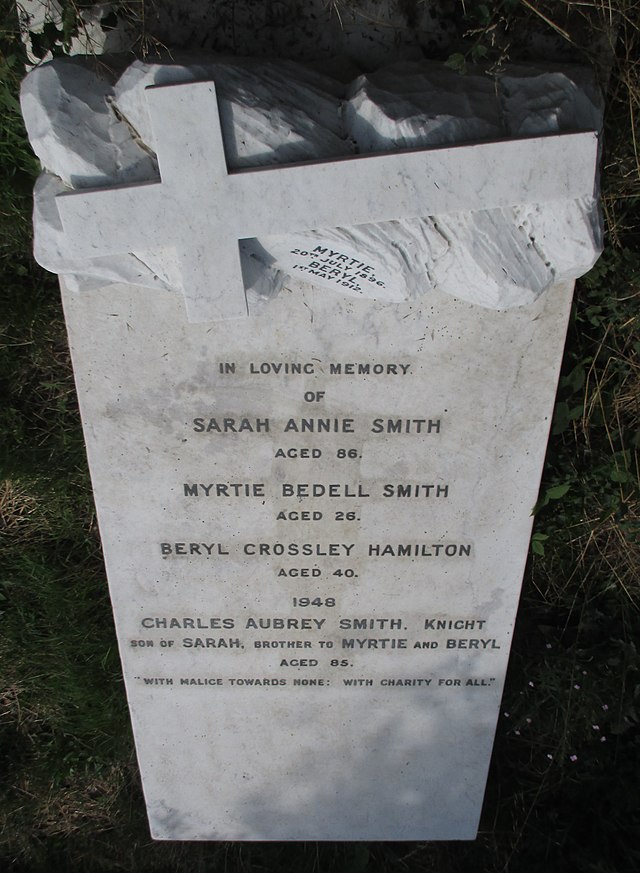‘Round the Corner’
Sir C Aubrey Smith is perhaps best remembered as a film star playing the typical English gentleman but in his earlier days he was captain of the Sussex County Cricket Club team and for one match the captain of England, on his England debut.
Smith was a tall fast-medium bowler with a particularly high action. He could also bowl a useful leg-cutter. The most interesting aspect of his play though was his curved run-up to the wicket that earned him the nickname ‘Round the Corner’. Sometimes he began his run-up from the deep mid-off position, at other times from behind the umpire. Dr W.G.Grace commented that ‘It is rather startling when he suddenly appears at the bowling crease’. He took 208 wickets for Sussex in a career that lasted 14 years from 1882 to 1896. Smith was also a particularly good slip fielder.

Captain of England in his only Test
Smith was the son of Dr C.J.Smith, a Brighton doctor and was educated at Charterhouse and Cambridge University where he won a Blue in each of his four years. The family lived in Albany Villas, Hove and Smith first played for Sussex whilst still at Cambridge. He went on to captain Sussex in three seasons when the County was not particularly strong, shown by the side finishing last in two of those seasons – 1888 and 1890.
Among Smith’s best performances were his five for eight against his former university in 1885 and his seven for 16 against MCC in 1890. He was a hard hitting batsman, but he never managed to score a century although he did make 142 in a second-class match against Hampshire in 1888.
Smith toured Australia in the winter of 1887/1888 and captained England in South Africa the following year. He played in the First Test at Port Elizabeth, captaining the side and becoming the only player to captain England in his one and only appearance in Test cricket. He was one of five players in Port Elizabeth making their Test debut, two of whom were making their first class debuts. Smith took five for 19 in the first innings and two for 42 in the second and the match was all over by 3.30 on the second day. He was the best bowler in the match.
He read his own obituary in the Transvaal
After the tour to South Africa, he remained in the Transvaal with Monty Bowden, another player from the team and together they established a stockbroking partnership. Whilst he was in the Transvaal Smith contracted pneumonia and doctors wrongly pronounced him dead. The Graff-Reinet Advertiser announced that ‘he had succumbed to that disease, inflammation of the lungs. Much regret will be felt at his disease. He made many friends by his kindly disposition’. There can’t be too many people who have read their own obituary.
Turning to the stage
Smith played for Transvaal captaining the side until he returned to England to begin a career on the stage, firstly at Hastings in 1892 and subsequently in London where in 1896 he made his debut on the West End stage as the arch villain Black Michael in the swashbuckling romance The Prisoner of Zenda.

A cricket team in Hollywood
He performed on the London and New York stages for thirty years before being cast in 1931 by MGM in the film The Bachelor father. This was a turning point in his career for he now settled in Hollywood where in 1937 he appeared in a remake of The Prisoner of Zenda opposite Raymond Massey.
In 1932, Smith founded a cricket club in Hollywood and supervised the building of a pavilion at Griffith Park, including the planting of five cartloads of English grass seed. The ground was later bulldozed to build a facility for the 1984 Los Angeles Olympics. Scorecards show that Smith managed to persuade some of Hollywood’s top stars to play for his team including Nigel Bruce, Basil Rathbone, Laurence Olivier, and PG Woodhouse. He even managed to persuade David Niven to give up a romantic evening he had planned, to play cricket. When in 1937 Gubby Allen’s tourists docked in Los Angeles for a short stay, Smith gave the players a workshop in the cinematic art.
His ashes were brought back to England
Smith lived in a house called The Round Corner and was knighted in 1944 for his services to Anglo-American friendship. He died in Beverley Hills on 20 December 1948, aged 85. His body was cremated and eight months later his ashes were brought back to England and interned in his mother’s grave in St Leonard’s churchyard in Hove.
